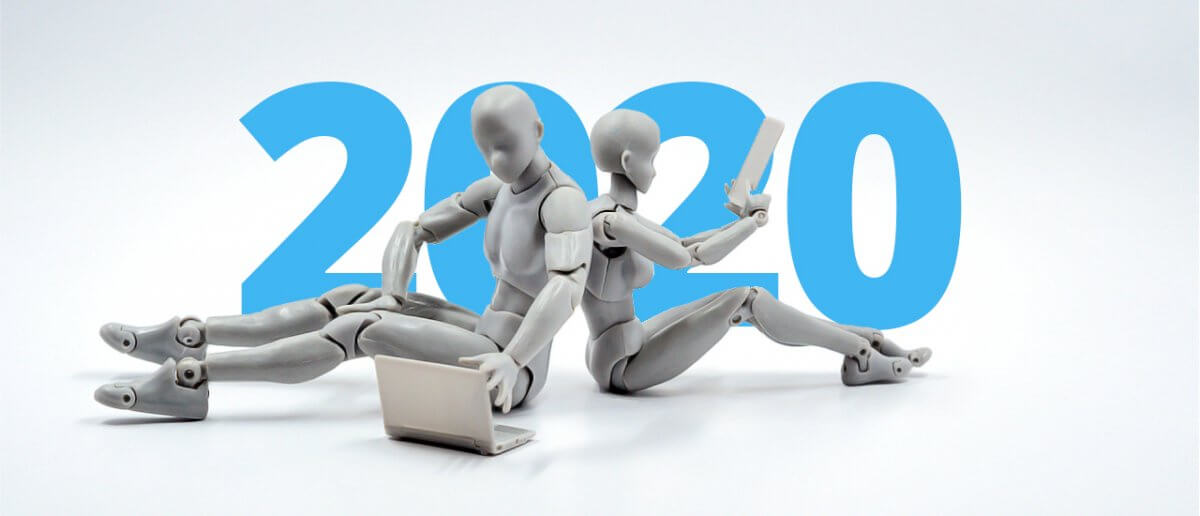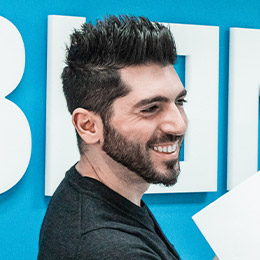For about 2 years now, I haven’t made any design predictions on future trends in web design. The main reason is that personally I did not notice any drastic trends emerging. Instead, the last two years had lots of similarities between them with very slow differences. This year, I’m bringing re-enforcement’s by also sharing what our design team thinks will trend in the new year.
As always, this is not necessarily backed-up by any special research for an accurate prediction, but mainly what I personally expect to see or would love to see trending during 2020. Or at least what the BLEND design team would like to see!
So, here are our 2020 design trend predictions:
Organic Interactivity
WebGL and Javascript effects have become a standard now-days and a lot more common, mainly because many developers share their experiments and codes over at Codepen, Tympanus, or other similar sites. Designers and developers who don’t know how to write WebGL from scratch, or just don’t have the time, are re-using or expanding on these codes; which has become a common practice. We have seen many trends emerging via these methods that act as special effects or decorations on websites. Trends such as the usage of interactive particle effects (see our homepage), water/ripple effects when hovering on images, the curtain or wavy-flag effect on backgrounds, as well as the now-popular distortion effects on images, such as glitching or pixelation. In 2020 we will definitely notice a more often use of more fluid or organic effects. Such as “spherizing elements”, or distorting elements in curvy fluid ways via interactions.
Immersive 3D
Leonidas, our newest Web Designer shares:
“In 2020, I expect to see more immersive use of 3D designs on the web. Historically, 3D technology has been very expensive and not accessible to most designers, but in the past few years, the amount of 3D modeling tools that are getting released has increased dramatically. As a result, their cost has dropped significantly and designers have numerous options to create 3D designs without the need of powerful equipment.”
Big Type
We are noticing a lot of websites that use huge typography as part of the design, as part of the navigation menu, or even the actual text content. We have seen sites with nothing more than just massive paragraph text that often gives us a headache trying to read it :). Often contrasting with smaller details around the layout, with photography elements, creating a graphic design or experimental feel to the overall website. Not only, such type usually appears with animated effects or while scrolling, providing a more elegant feel to it in contrast with how big or bold it feels. I’m definitely expecting more use and more creative approaches of huge typography nowadays, especially when taking into account big widescreen monitors or TV’s.
Illustrated Storytelling
Larisa, our illustrator/animator shares:
“In the last 2 years, illustrations have been used in web design, trying to make user’s understand the story of a product better. In 2020 I believe that it will be among the hottest trends using them for storytelling. Amazing work will be displayed from simple line illustrations to more modern and sophisticated ones, such as different types of characters for example – big body and no facial features, painting style and also 3D illustrations will be seen a lot. Textures and also gradients, created by big bold colors to create a impact on the users eyes.”
Augmented Reality
Andreas, our Senior UI/UX Digital Designer shares:
“AR delivered a transformation in digital media that fused our digital experience with the real world. AR basically allows orientation and placement of objects by identifying specific patterns or markers in the scene which JS libraries address this to achieve AR functionality. Some examples of the most popular applications of AR are Pokemon Go and Snapchat Lens. Mobile applications have already begun embracing AR and VR successfully, however, support on the Web is still lagging behind. Two new movements started to rise from 2016 called WebAR and WebVR that implemented the technology first in Chrome and then Firefox in 2017. The two movements from W3C Immersive Web Community Group decided to merge into one device API called WebXR. We believe that 2020 will have a significant rise in AR applications for the web with more and more websites taking advantage of the technology to bring forth amazing experiences that blend the digital world with reality. One simple and most famous web example is the experience that Apple gives to users when they want to view Apple products through their website on Safari using the camera on the smartphone to enable the AR experience.”

So, there you have it! This is what our creative team predicts for web design in 2020. What we hope for, what we expect, and in general what we could aim for our own work. Do you agree? Contact us to discuss your project and how we can approach it with the latest creative trends in web design.




